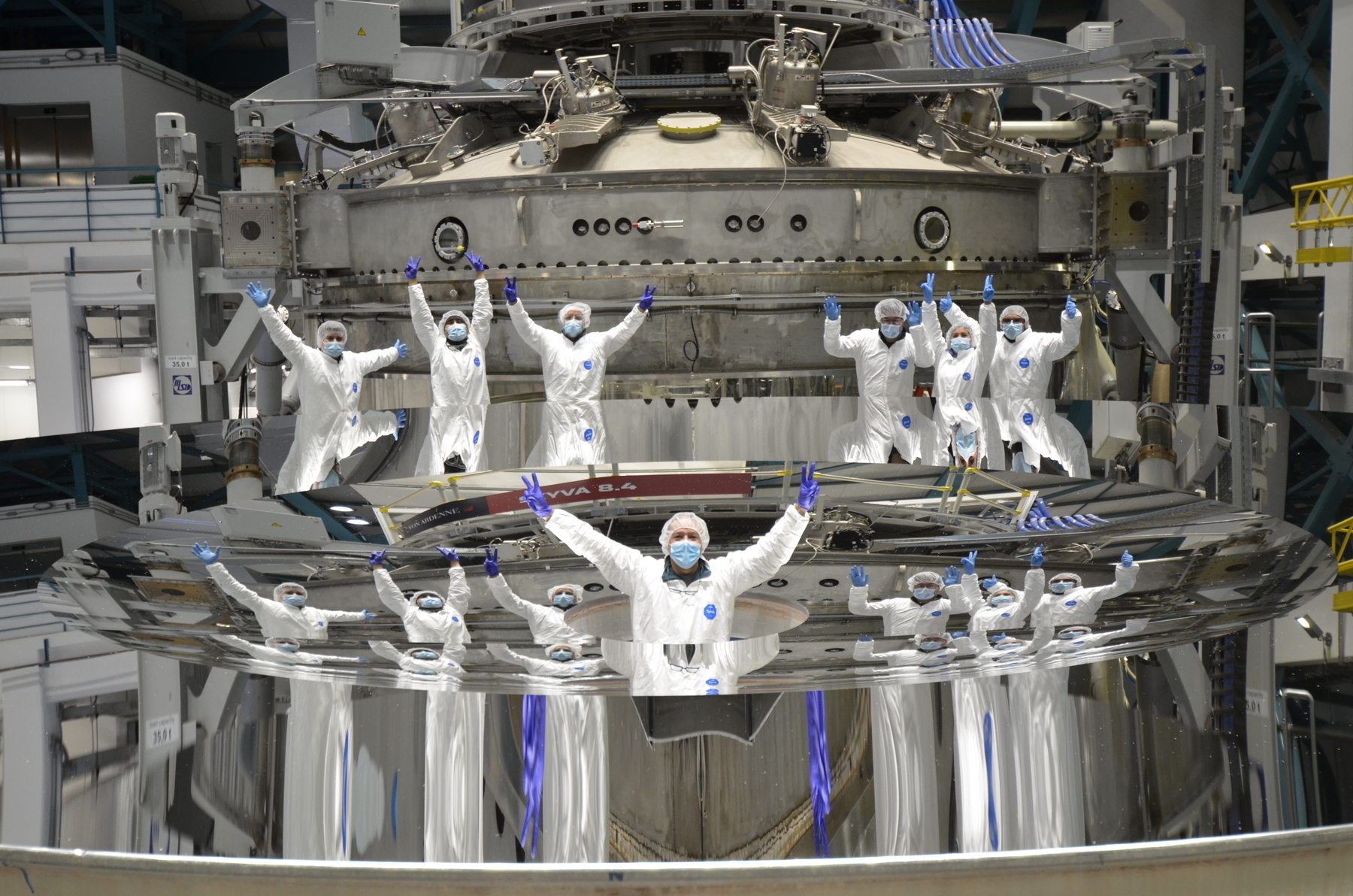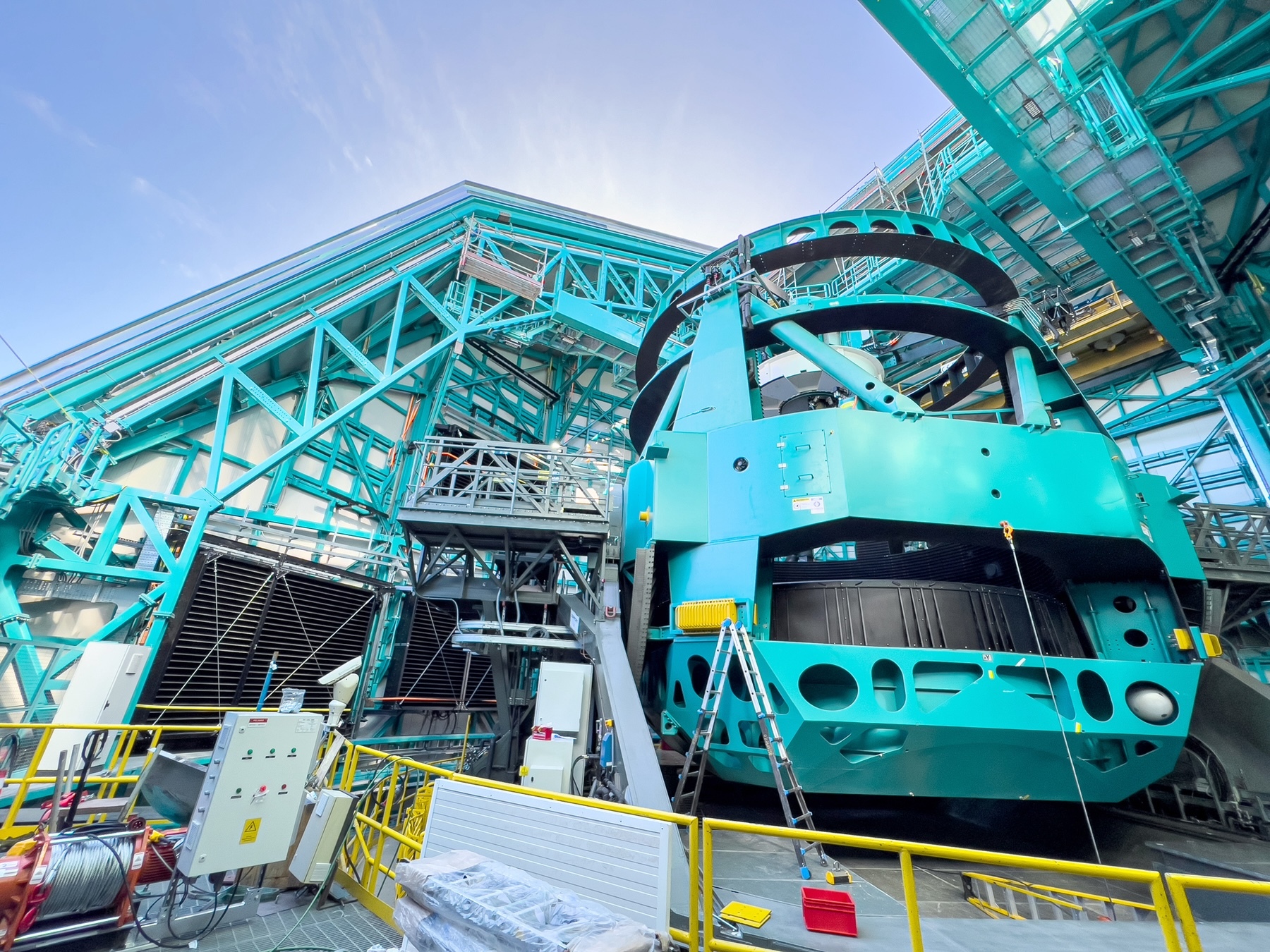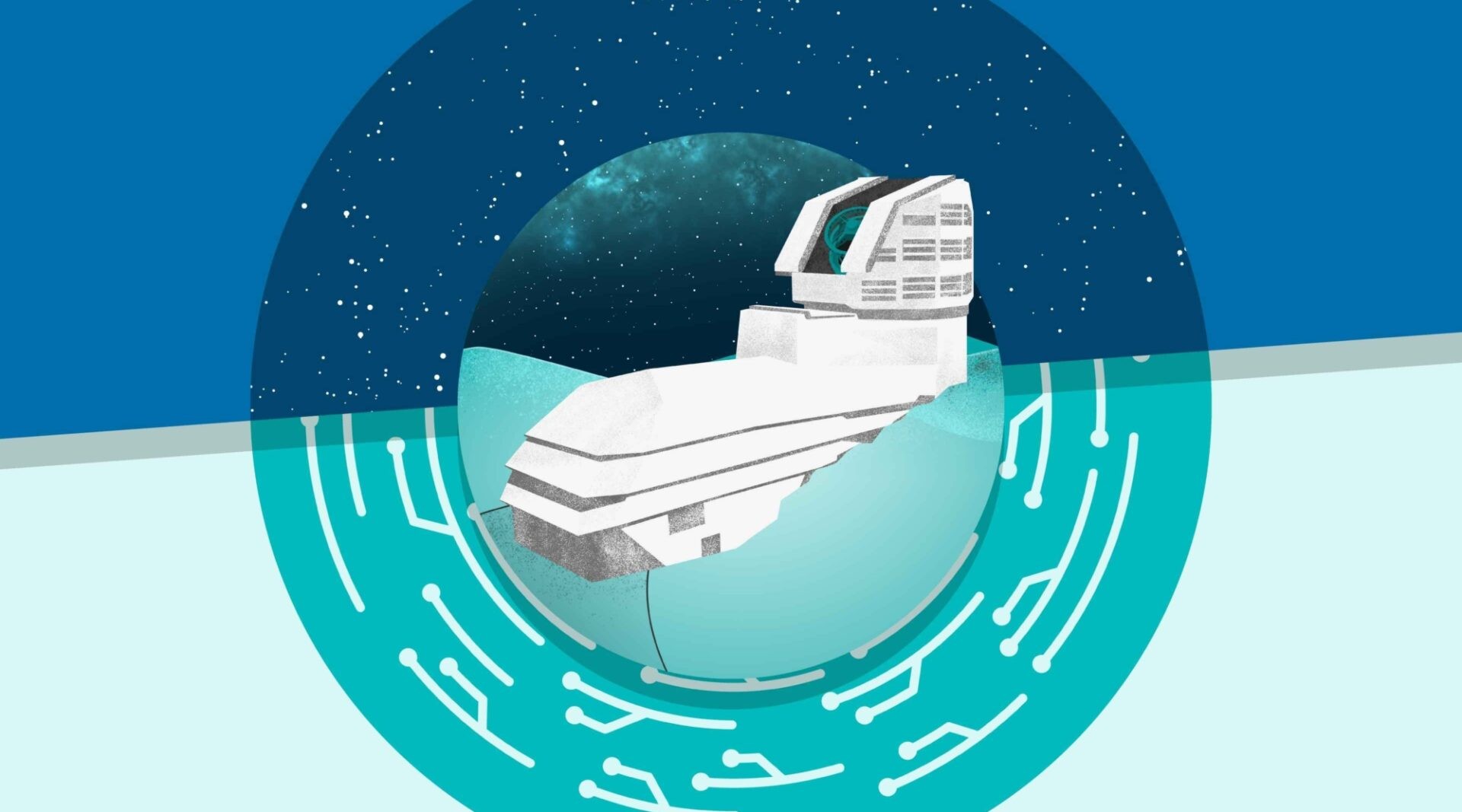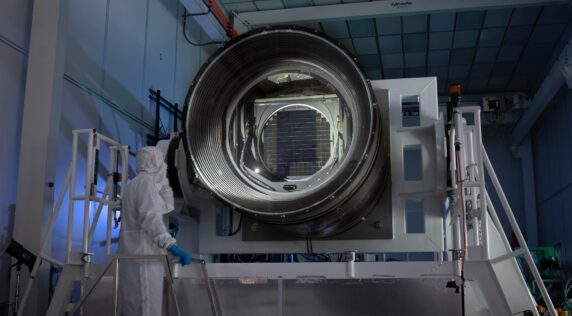Rubin Technology
Rubin Observatory will create the ultimate movie of the night sky using an innovative telescope design, novel data infrastructure, and the largest camera ever built.
In order to produce the largest time-lapse of the cosmos ever attempted, a number of technological innovations had to be developed for Rubin Observatory. Some components of Rubin are entirely new innovations, while others build on existing technologies in new ways. All contribute toward enabling Rubin’s ambitious 10-year survey of the southern hemisphere sky.
Here are a few ways Rubin is different from other observatories:
Two-in-one primary/tertiary mirror
Rubin’s telescope is not the first with an ~8-meter mirror, but it is the first to combine the primary and tertiary mirrors in a single surface.
Did you know: combining the mirrors in a single surface is a unique innovation that allows the telescope to be more compact, making it easier to move and get ready for its next observation quickly.

Largest digital camera in the world
About the size of an SUV and weighing in around 2800 kg (6000 lbs), the LSST Camera is the largest camera ever built. It has a huge 3200-megapixel CCD array that will capture our largest, most-detailed view of the cosmos yet.
Did you know: it would take about 400 Ultra HD TV screens to display a single Rubin image.

Fastest-moving mount for a telescope this size
Rubin's telescope is the fastest-slewing large telescope in the world. It only takes 5 seconds to move to its next position and be ready for the next image.
To make this speed possible, the telescope is not only compact (thanks to its two-in-one mirror design), but it also features powerful drive motors that are capable of accelerating and halting the 220-ton mount in record time — all with minimal vibrations throughout the system that would negatively impact the quality of images!
Did you know: you would not be able to outrun Rubin's telescope if it were rotating at its maximum speed!

Huge field of view combined with light collecting power
This combination allows Rubin to detect faint objects over a wide area with just one image. Together with the telescope’s speed, this trifecta is what will enable Rubin to produce its ultra high-definition 10-year time-lapse movie of the Universe.
Did you know: With every image, Rubin will capture an area of sky about 10 square degrees in size. That's about the area of 45 full moons, or the size of the patch of sky covered by a golf ball held at arm's length!

Broad access to data
Rubin data will be available right away to all scientists in the US and Chile, as well as members of Rubin’s In-kind contribution program, through a web-based portal (no data downloads required). After two years, anyone in the world can access Rubin data.
Additionally, Rubin will do near-real-time processing of new images every night and release world-public alerts within 60 seconds for objects that have moved or changed. This will allow scientists around the world to quickly follow up using other telescopes.
Did you know: Every night, Rubin Observatory will produce 20 terabytes of data and generate up to 10 million world-public alerts of changes in the night sky. At the end of its 10-year survey, Rubin will have produced 60 petabytes of raw image data. This is the first time this much astronomical data will be available to so many people!







